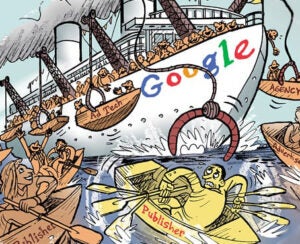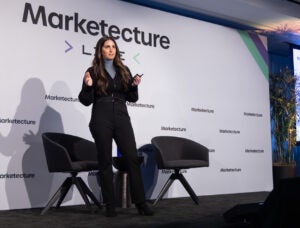 The No. 1 reason consumers shop online is because it’s convenient, yet online commerce still represents less than 10% of overall sales.
The No. 1 reason consumers shop online is because it’s convenient, yet online commerce still represents less than 10% of overall sales.
“Why isn’t this number higher? It should be higher,” said Ken Cassar, VP and principal analyst at Slice Intelligence, at a New York City event hosted by Rakuten Marketing on Tuesday.
According to research conducted by Slice, which analyzes digital receipts across a consumer purchase panel of around 4.2 million people, 38% of consumers said they shop online because it’s convenient, with price and selection trailing behind at 31% and 29%, respectively.
But consumers still find some aspects of the online shopping experience inconvenient – such as shipping and handling fees, which is a top frustration.
Amazon Prime is capitalizing on this grievance. Around 54 million people spend $99 a year for expedited shipping through Amazon Prime and the Dash button, which allows Prime members to reorder specific household items with the press of a button, underscores the trend toward convenience commerce.
There’s still a barrier to entry: The Dash setup process can be a little confusing, not to mention the buttons cost $4.99 a pop (the price of the button is refunded after the first purchase), and only about half of the people who buy them actually activate them, Cassar said. But once consumers get the hang of it, they’re hooked, and their average order size goes through the roof.
Tide Dash button users, for example, do 98% of their spending in the laundry category with Tide.
But convenience, powered by mobile, is also becoming the king of offline shopping experiences.
Just look at Starbucks and its order ahead functionality, noted Forrester Research VP Julie Ask in a report released Tuesday. Starbucks allows its customers to select and pay for their drink in its app and skip the line when they get to the store.
But not everyone can be Starbucks, and most will have to partner with other players to provide the level of convenience consumers are looking for.
“Opportunities to distribute experience fragments within third-party platforms are multiplying, while, at the same time, consumers are consolidating their time in fewer and fewer apps or brands,” Ask wrote. “These trends, combined with the pressure to keep pace with customer expectations of convenience are forcing enterprises not only to own mobile moments, but also to borrow them.”
Fandango, for example, allows customers to purchase movie tickets within Apple iMessage. Domino’s in Australia lets people order pizza via SMS. HP launched an “Instant Ink” service in 2015 that automatically reorders and ships cartridges to its consumers when their printers register that they’re low on ink. And General Electric is partnering with Amazon on a set of washing machines that automatically reorder laundry detergent for Prime members when they need it.
In a similar vein, subscription-based ecommerce is also on the rise – see: Amazon’s Subscribe and Save, Dollar Shave Club, Harry’s, Birchbox, Graze and many others – but a certain lack of control comes along with a subscription model, and some consumers chafe at that.
Slice’s research found that 20% of consumers who sign up for online subscription services are frustrated because they feel like they’ll wind up accumulating more product than they need. On the flip side, 13% are worried they’ll run out of product too quickly.
“What we have at the highest level is a lack of control. You can pause it, but you have to go through some effort to do that,” Cassar said. “Personally, I’ve accumulated a lifetime supply of Harry’s Razors over the course of six months. Control is a very big problem.”
Which is where IoT commerce comes in – the Amazon Echos and Google Homes of the world. If you’re running low on something, just say the world and Alexa or Google places the order.
“Making the purchase process easier and easier is something I think we’re going to see more and more of,” Cassar said. “[Convenience] is what’s going to motivate the consumer to spend more and shift the percentage [of shopping] above the 10% mark online.”













